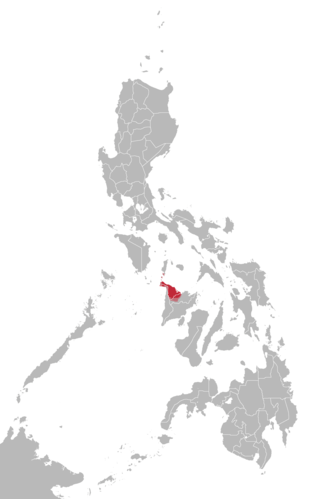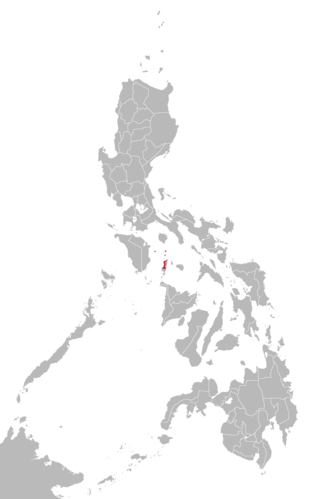Classification
![Kalamian [blue] languages of Palawan Palawanic and Kalamian languages.png](http://upload.wikimedia.org/wikipedia/commons/thumb/9/99/Palawanic_and_Kalamian_languages.png/220px-Palawanic_and_Kalamian_languages.png)
The Kalamian languages are a primary branch of the Philippine language family, notable for reflecting Proto-Malayo-Polynesian *q as k and *R as l, while reducing original *k to zero. [1]
| Kalamian | |
|---|---|
| Geographic distribution | islands between Mindoro and Palawan |
| Linguistic classification | Austronesian
|
| Language codes | |
| Glottolog | kala1389 |
The Kalamian languages are a small cluster of languages spoken in the Philippines: Calamian Tagbanwa and Agutaynen. Other languages called Tagbanwa, the Aborlan Tagbanwa language and Central Tagbanwa language are members of the Palawanic languages.
These are among the few languages of the Philippines which continue to be written in indigenous scripts, though mostly for poetry.[ citation needed ]
![Kalamian [blue] languages of Palawan Palawanic and Kalamian languages.png](http://upload.wikimedia.org/wikipedia/commons/thumb/9/99/Palawanic_and_Kalamian_languages.png/220px-Palawanic_and_Kalamian_languages.png)
The Kalamian languages are a primary branch of the Philippine language family, notable for reflecting Proto-Malayo-Polynesian *q as k and *R as l, while reducing original *k to zero. [1]

Tagbanwa is one of the scripts indigenous to the Philippines, used by the Tagbanwa and the Palawan people as their ethnic writing system.

The Bisayan languages or Visayan languages are a subgroup of the Austronesian languages spoken in the Philippines. They are most closely related to Tagalog and the Bikol languages, all of which are part of the Central Philippine languages. Most Bisayan languages are spoken in the whole Visayas section of the country, but they are also spoken in the southern part of the Bicol Region, islands south of Luzon, such as those that make up Romblon, most of the areas of Mindanao and the province of Sulu located southwest of Mindanao. Some residents of Metro Manila also speak one of the Bisayan languages.

Tausūg is an Austronesian language spoken in the province of Sulu in the Philippines and in the eastern area of the state of Sabah, Malaysia as well as in the Nunukan Regency, province of North Kalimantan, Indonesia by the Tausūg people. It is widely spoken in the Sulu Archipelago, the Zamboanga Peninsula, southern Palawan, Malaysia and Indonesia.
The Central Philippine languages are the most geographically widespread demonstrated group of languages in the Philippines, being spoken in southern Luzon, Visayas, Mindanao, and Sulu. They are also the most populous, including Tagalog, Bikol, and the major Visayan languages Cebuano, Hiligaynon, Waray, Kinaray-a, and Tausug, with some forty languages all together.

The Philippine languages or Philippinic are a proposed group by R. David Paul Zorc (1986) and Robert Blust that include all the languages of the Philippines and northern Sulawesi, Indonesia—except Sama–Bajaw and the Molbog language—and form a subfamily of Austronesian languages. Although the Philippines is near the center of Austronesian expansion from Taiwan, there is relatively little linguistic diversity among the approximately 150 Philippine languages, suggesting that earlier diversity has been erased by the spread of the ancestor of the modern Philippine languages.

Aklanon (Akeanon), also known as Bisaya/Binisaya nga Aklanon/Inaklanon or simply Aklan, is an Austronesian language of the Bisayan subgroup spoken by the Aklanon people in the province of Aklan on the island of Panay in the Philippines. Its unique feature among other Bisayan languages is the close-mid back unrounded vowel occurring as part of diphthongs and traditionally written with the letter ⟨Ee⟩ such as in the autonyms Akean and Akeanon. However, this phoneme is also present in other but geographically scattered and distant Philippine languages, namely Itbayat, Isneg, Manobo, Samal and Sagada.
The Palawano languages are spoken in the province of Palawan in the Philippines, by the Palawano people.
The Iraya language is a language spoken by Mangyans on the island of Mindoro in the Philippines. Zorc (1974) places the Iraya language within the North Mangyan group of Malayo-Polynesian languages, though Lobel (2013) notes that it shows "considerable differences" to Tadyawan and Alangan, the other languages in this group. There are 6,000 to 8,000 Iraya speakers, and that number is growing. The language status of Iraya is developing, meaning that this language is being put to use in a strong and healthy manner by its speakers, and it also has its own writing system.
The Southern Mindoro languages are one of two small clusters of Austronesian languages spoken by the Mangyan people of Mindoro Island in the Philippines. They make up a branch of the Greater Central Philippine subgroup.
The Northern Mindoro languages are one of two small clusters of languages spoken by the Mangyan people of Mindoro Island in the Philippines.
The Palawanic languages are a subgroup in the Greater Central Philippine-family spoken on the island of Palawan and nearby islets.
The Greater Central Philippine languages are a proposed subgroup of the Austronesian language family, defined by the change of Proto-Malayo-Polynesian *R to *g. They are spoken in the central and southern parts of the Philippines, eastern and western parts of Sabah, Malaysia and in northern Sulawesi, Indonesia. This subgroup was first proposed by Robert Blust (1991) based on lexical and phonological evidence, and is accepted by most specialists in the field.
Calamian Tagbanwa is spoken in the Calamian Islands just north of Palawan Island, Philippines. It is not mutually intelligible with the other languages of the Tagbanwa people. Ethnologue reports that it is spoken in Busuanga, Coron, Culion, and Linapacan municipalities.
Central Tagbanwa is spoken on Palawan Island in the Philippines. It is not mutually intelligible with the other languages of the Tagbanwa people.
Klata is an Austronesian language of the southern Philippines. It is spoken on the eastern slopes of Mount Apo in Davao del Sur Province, as well as in Davao City (Ethnologue) in an area stretching from Catalunan to Calinan.
Old Tagalog, also known as Old Filipino, is the earliest form of the Tagalog language during the Classical period. It is the primary language of pre-colonial Tondo, Namayan and Maynila. The language originated from the Proto-Philippine language and evolved to Classical Tagalog, which was the basis for Modern Tagalog. Old Tagalog uses the Tagalog script or Baybayin, one of the scripts indigenous to the Philippines.
The Proto-Philippine language is a reconstructed ancestral proto-language of the Philippine languages, a proposed subgroup of the Austronesian languages which includes all languages within the Philippines as well as those within the northern portions of Sulawesi in Indonesia. Proto-Philippine is not directly attested to in any written work, but linguistic reconstruction by the comparative method has found regular similarities among languages that cannot be explained by coincidence or word-borrowing.

Bantoanon or Asi is a regional Bisayan language spoken, along with Romblomanon and Onhan, in the province of Romblon, Philippines. Asi originated in the island of Banton, Romblon and spread to the neighboring islands of Sibale, Simara, and the towns of Odiongan, San Andres and Calatrava on Tablas Island. The Asi spoken in Odiongan is called Odionganon, Calatravanhon in Calatrava, Sibalenhon in Concepcion, Simaranhon in Corcuera, and Bantoanon in Banton. The Asi language is closer to Western Visayan language like Karay-a than to Cebuano and Waray
Kalamian may refer to:
R. David Zorc is an American linguist primarily known for his work on Austronesian languages and linguistics, particularly the Philippine languages.